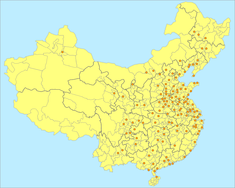
Every 1M+ Chinese City #1
Last updated: Wednesday May 17th, 2023
Report this blog
The latest 2023 citypopulation.de major agglomeration list contains 132 Chinese cities with over a million population (plus 4 in Taiwan). Most non-Chinese will struggle to name more than a handful. For the common Chinese, most people would not have heard of the smaller ones either. And if they have heard of the city, unless they are the locals, they would know very little or nothing about the city, or only know some stereotypes of it.
Although I wrote a blog previously to teach people the Chinese city names, the Chinese cities are consistently scored the lowest in many JetPunk city quizzes. Even if you are a hardcore JetPunker who can remember every Chinese city, you probably still would not know where these cities are and what they are like. So in this blog series, I will go through all 132 cities, and describe the very basic information about each of them (so you can be on a par with an average Chinese person). If you want to learn more about the city, follow the link to the Wikipedia article.
Qiqihar
Name
Simplified Chinese: 齐齐哈尔
Traditional Chinese: 齊齊哈爾
Pronunciation
Mandarin pinyin: qí qí hā ěr
Cantonese jyutping: cai4 cai4 haa1 ji5
Population
citypopulation.de: 1,030,000
census 2020 (metro): 959,787

Qiqihar used to be the capital of Heilongjiang. It is now the province's second largest city (by city proper population). It is famous for its heavy industry.
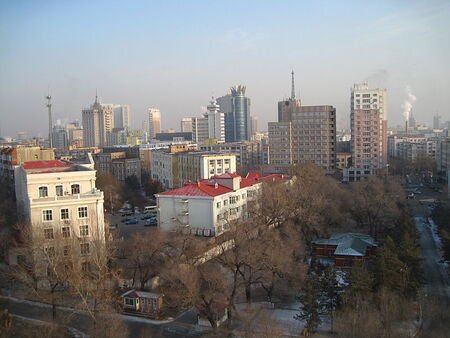
Daqing
Name
Simplified Chinese: 大庆
Traditional Chinese: 大慶
Pronunciation
Mandarin pinyin: dà qìng
Cantonese jyutping: daai6 hing3
Population
citypopulation.de: 1,830,000
census 2020 (metro): 1,574,389
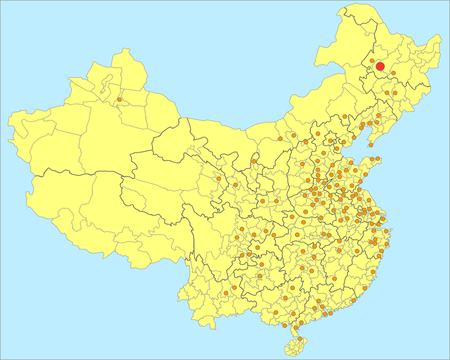
Daqing is known as the "Oil Capital of China". The city was built when oil was discovered during the height of the Great Leap Forward. Most Chinese would only know this city from Mao's famous quote: to "learn from Dazhai in agriculture, learn from Daqing in industry".
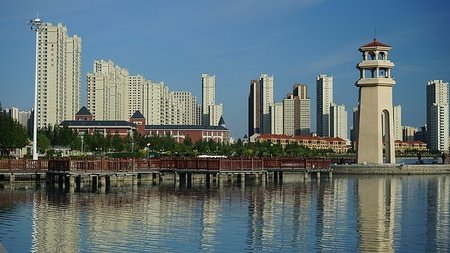
Harbin
Name
Simplified Chinese: 哈尔滨
Traditional Chinese: 哈爾濱
Pronunciation
Mandarin pinyin: hā ěr bīn
Cantonese jyutping: haa1 ji5 ban1
Population
citypopulation.de: 5,400,000
census 2020 (metro): 5,841,929

Harbin is a modern city built by the Russian when the Qing government ceded rights to the Russian to build and control the Chinese Eastern Railway connecting Vladivostok (see my Chinese history blog). It is now the capital and the largest city of Heilongjiang. The city is known for its bitter cold winter, when the temperature can plunge below -20C. It is famous for its colourful International Ice and Snow Sculpture Festival.
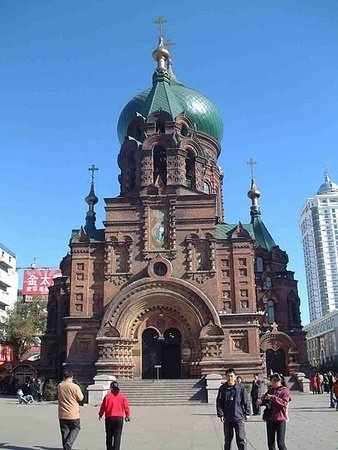
Changchun
Name
Simplified Chinese: 长春
Traditional Chinese: 長春
Pronunciation
Mandarin pinyin: cháng chūn
Cantonese jyutping: coeng4 ceon1
Population
citypopulation.de: 4,900,000
census 2020 (metro): 5,019,477
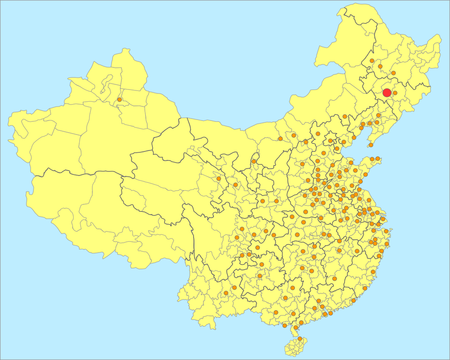
Jilin
Name
Simplified Chinese: 吉林
Traditional Chinese: 吉林
Pronunciation
Mandarin pinyin: jí lín
Cantonese jyutping: gat1 lam4
Population
citypopulation.de: 1,610,000
census 2020 (metro): 1,895,865

Jilin is the only city in China with its name the same as its province. It used to be the capital of the province, but has since been overtaken by its neighbour Changchun.
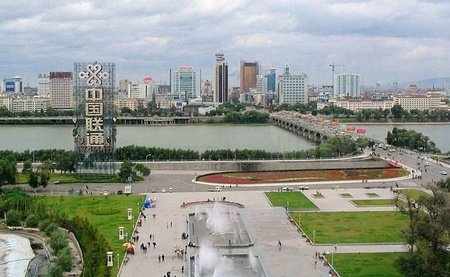
Shenyang
Name
Simplified Chinese: 沈阳
Traditional Chinese: 瀋陽
Pronunciation
Mandarin pinyin: shěn yáng
Cantonese jyutping: sam2 joeng4
Population
citypopulation.de: 8,550,000
census 2020 (metro): 8,192,848
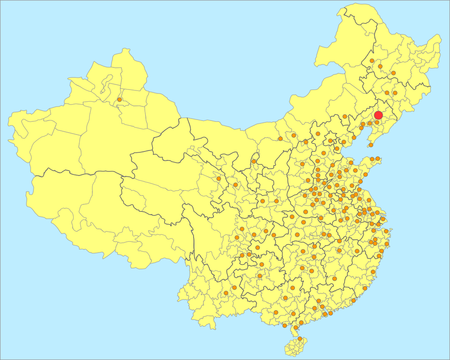
Shenyang is the capital of Liaoning, and the largest city of the three Northeastern provinces. As the original capital of the Manchu before invading the Ming, it was kept as the auxiliary capital of the Qing dynasty and remained an important city with its imperial palace and mausoleum. Today it is renowned for its heavy industry.
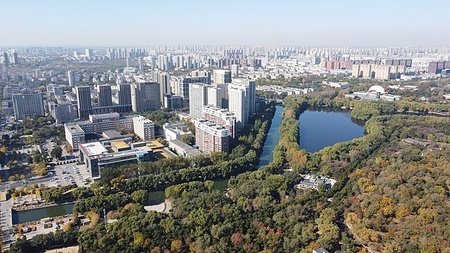
Anshan
Name
Simplified Chinese: 鞍山
Traditional Chinese: 鞍山
Pronunciation
Mandarin pinyin: ān shān
Cantonese jyutping: on1 saan1
Population
citypopulation.de: 2,350,000
census 2020 (metro): 2,712,789
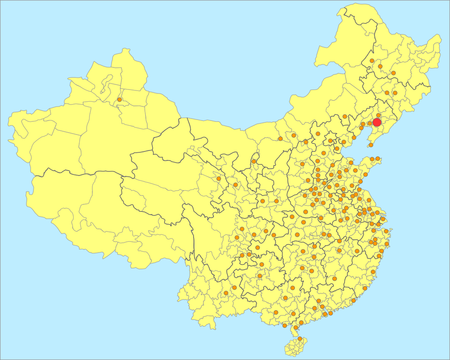
Anshan is known for its steel manufacturing industry. It is cold, polluted, and does not have a good reputation (similar to the Rust Belt of the United States).
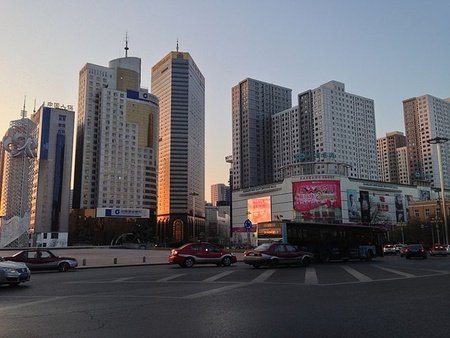
Dalian
Name
Simplified Chinese: 大连
Traditional Chinese: 大連
Pronunciation
Mandarin pinyin: dà lián
Cantonese jyutping: daai6 lin4
Population
citypopulation.de: 5,150,000
census 2020 (metro): 5,106,719
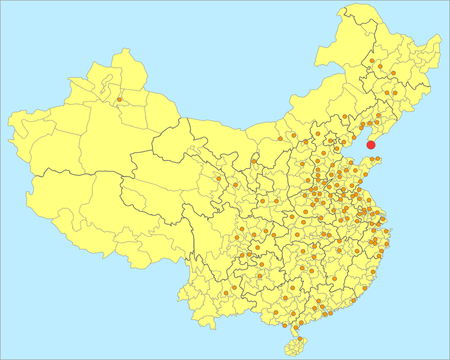
Dalian is a modern city at the tip of the Liaodong Peninsula. Together with the nearby Lüshun, it was leased to the Russian in 1898 (at the same time when the New Territories of Hong Kong was leased to the British for 99 years). The Russian built the city of Dalniy (Дальний, meaning "far-away") in the hope of having an ice-free port in the Far East. However, it was soon lost to Japan in the Russo-Japanese War.
During the 90s when Bo Xilai was the mayor, Dalian underwent rapid development and became a cosmopolitan city, distinct from its poorer neighbours in the Northeast.
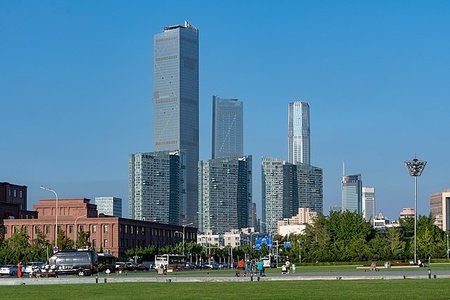
Panjin
Name
Simplified Chinese: 盘锦
Traditional Chinese: 盤錦
Pronunciation
Mandarin pinyin: pán jǐn
Cantonese jyutping: pun4 gam2
Population
citypopulation.de: 1,010,000
census 2020 (metro): 1,389,691
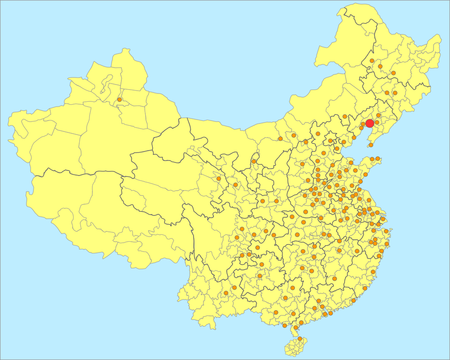
Panjin is a small city on the coast of Liaoning. It is known for its oil industry, but otherwise little known outside Liaoning.
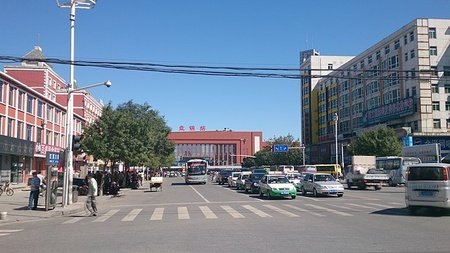
Jinzhou
Name
Simplified Chinese: 锦州
Traditional Chinese: 錦州
Pronunciation
Mandarin pinyin: jǐn zhōu
Cantonese jyutping: gam2 zau1
Population
citypopulation.de: 1,220,000
census 2020 (metro): 1,524,362
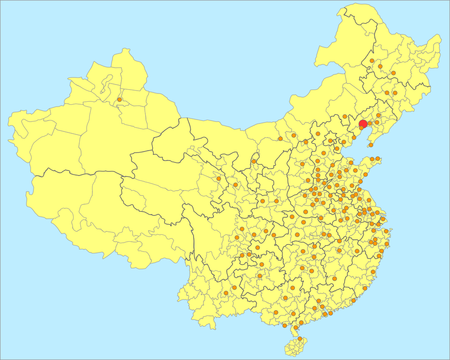
Jinzhou is another small city in Liaoning not well known by most people. It is located on the key route between Beijing and the Northeastern provinces.

Huludao
Name
Simplified Chinese: 葫芦岛
Traditional Chinese: 葫蘆島
Pronunciation
Mandarin pinyin: hú lu dǎo
Cantonese jyutping: wu4 lou4 dou2
Population
citypopulation.de: 1,020,000
census 2020 (metro): 1,252,600
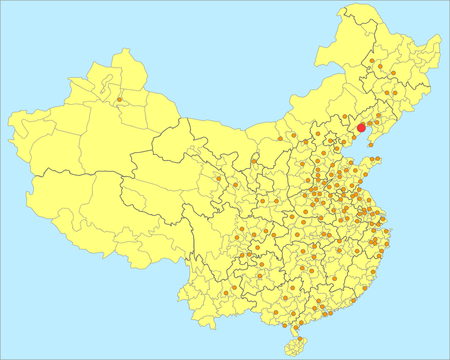
Huludao, literally means "gourd island", is a small coastal city in Liaoning famous for its nuclear submarine base.
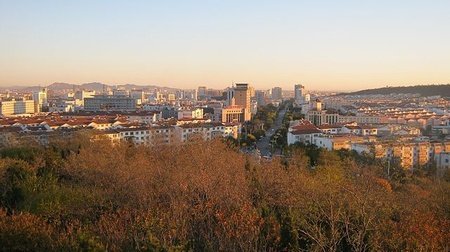
Chifeng
Name
Simplified Chinese: 赤峰
Traditional Chinese: 赤峰
Pronunciation
Mandarin pinyin: chì fēng
Cantonese jyutping: cek3 fung1
Population
citypopulation.de: 1,140,000
census 2020 (metro): 1,175,391

Chifeng is the largest city in eastern Inner Mongolia, although the majority population is ethnic Han Chinese. The large administrative area covers sites of the former Liao/Khitan dynasty capitals from the 10th century.
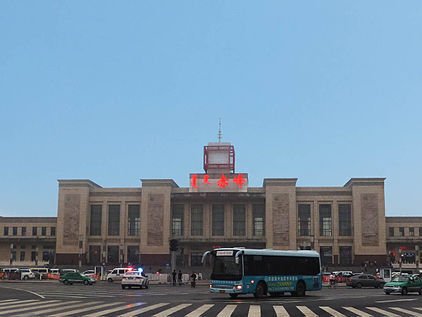
Hohhot
Name
Simplified Chinese: 呼和浩特
Traditional Chinese: 呼和浩特
Pronunciation
Mandarin pinyin: hū hé hào tè
Cantonese jyutping: fu1 wo4 hou6 dak6
Population
citypopulation.de: 2,625,000
census 2020 (metro): 2,944,889
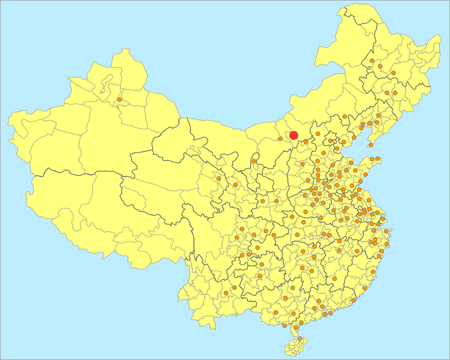
Hohhot is the capital of Inner Mongolia. It literally means the "Blue/Green City" in Mongolian. Its original name, Kweisui, means "assimilate and pacify" in Chinese. Nowadays its majority citizens are Han Chinese, but the city has great influences from Mongolian, Muslim and Tibetan Buddhism.
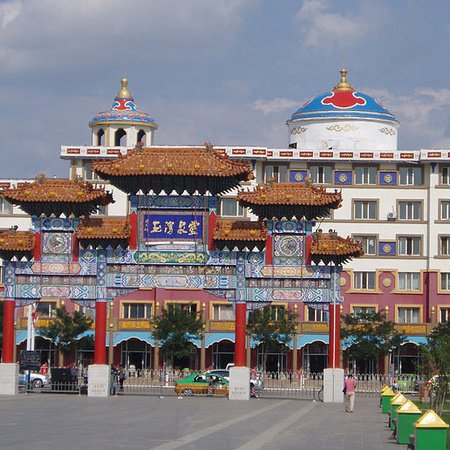
Baotou
Name
Simplified Chinese: 包头
Traditional Chinese: 包頭
Pronunciation
Mandarin pinyin: bāo tóu
Cantonese jyutping: baau1 tau4
Population
citypopulation.de: 2,150,000
census 2020 (metro): 2,261,089
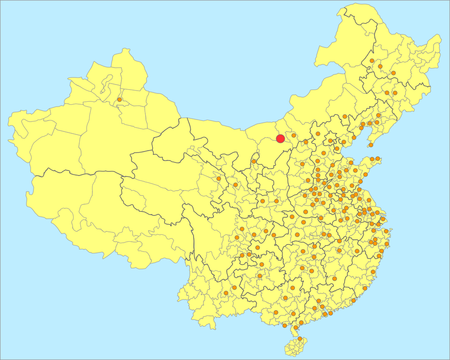
Baotou, literally the "deer city" in Mongolian, is the second largest city in Inner Mongolia, rivalling its capital Hohhot. The vast majority of its population is Han Chinese. Baotou is renowned for its rare earth mines and processing industry.
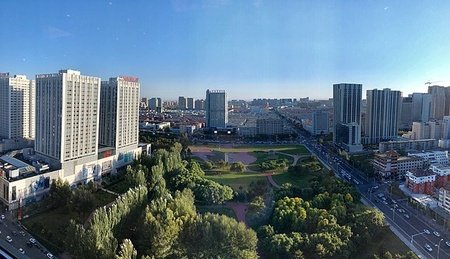
Yinchuan
Name
Simplified Chinese: 银川
Traditional Chinese: 銀川
Pronunciation
Mandarin pinyin: yín chuān
Cantonese jyutping: ngan4 cyun1
Population
citypopulation.de: 2,300,000
census 2020 (metro): 1,901,793
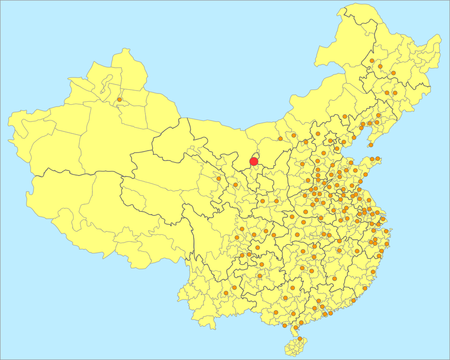
Yinchuan is the capital of Ningxia Hui Autonomous Region. The Hui people are Muslim and there is a large mosque in the city. Located on the bank of the Yellow River with its fertile ground, Yinchuan is a major agriculture market and distribution centre.

Ürümqi
Name
Simplified Chinese: 乌鲁木齐
Traditional Chinese: 烏魯木齊
Pronunciation
Mandarin pinyin: wū lǔ mù qí
Cantonese jyutping: wu1 lou5 muk6 cai4
Population
citypopulation.de: 4,725,000
census 2020 (metro): 4,054,359
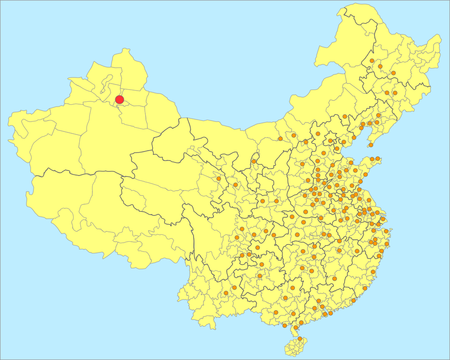
Ürümqi is the capital of Xinjiang Uyghur Autonomous Region. It is the most remote large city in China and the largest city in Central Asia. The city was originally called Dihua, literally to "enlighten and educate" the barbarians. It was established by Qianlong Emperor in the 18th century, after he conquered the area and ordered the Dzungar genocide. Nowadays, the city majority population is Han Chinese, with the Uyghur an oppressed minority inside their own "autonomous region".
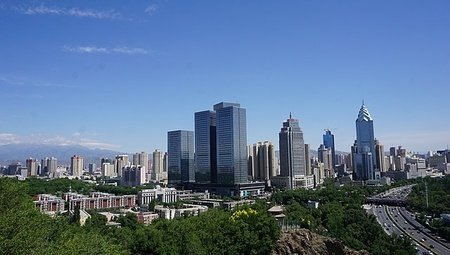
This concludes the first blog of the series. It will be a mammoth task to go through all 132 cities, so wish me luck!

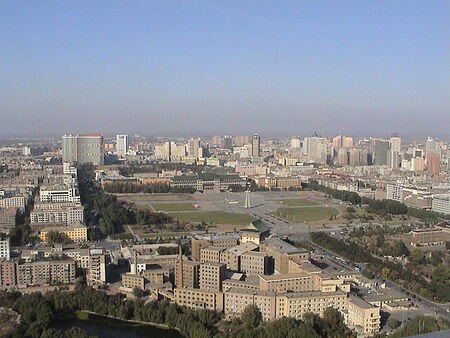
Interesting read :)